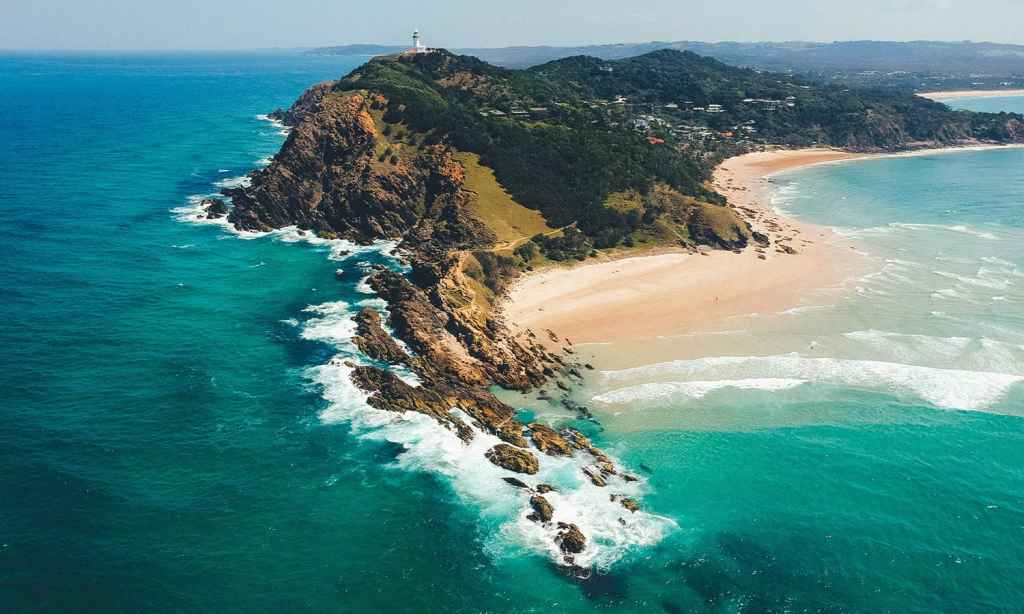Some of Australia’s priciest postcodes and tourism hotspots could be washed into the sea as a result of unchecked rising global temperatures.
Without immediate climate action, large swaths of Australia’s pristine coastlines and iconic beaches could disappear within our life times, according to new research from FrontierSI and NGIS Australia.
Using data released by the UN in their Intergovernmental Panel on Climate Change report, the two organisations have illustrated the severity of the impact of climate change in Australia by developing an interactive website, Coastal Risk Australia.
The site allows users to put in their own postcode, or that of anywhere in the country, to see what the future might hold for that region at various levels of warming and in different prediction timelines.
The IPCC report indicates that by 2100, global sea levels are likely to increase by 0.84m. Potential worst case scenarios also included here indicate we could see sea levels up to 2m higher by 2100 and 5m higher by 2150.
“The advances in science confirmed in the IPCC Sixth Assessment report show that sea levels will continue to rise for future generations, impacting on Australia’s coastal infrastructure. We wanted to communicate how the new projections would impact Australian coastal communities,” said Nathan Eaton, Executive Director at NGIS Australia.
“By 2050, sea-level change of 15 to 30cm will be unavoidable, this means that coastal flooding will become worse during storm surges. Scenarios beyond 2050, however, become increasingly sensitive to choices and actions made by global communities to reduce emissions.”
With 15 to 30cm of sea-level rise already likely locked in, the website helps people visualise what that looks like, as it doesn’t sound all that bad on paper. Satellite imagery however shows that the impact will be devastating.

“Australia is facing significant challenges, one of which is being more resilient to climate. The Coastal Risk Australia tool aims to place scientific modelling into the hands of the people so they can see for themselves how the areas they live in could be impacted in the future by climate change,” said Graeme Kernich, CEO of FrontierSI.
The website shows similarly disturbing impacts in places like Cairns, Williamstown, Noosa, and many of the nation’s favourite holiday spots.
Bells Beach, Brighton, Ocean Grove, St Kilda and Wye River beaches in Victoria are all at risk, as are Agnes Water, Burleigh Heads, and Whitehaven in Queensland, Cottesloe and Coogee beaches in Western Australia, and Glenelg in South Australia.
The site also shows that homes and streets in the suburbs of Albert Park, the Docklands, Middle Park, St Kilda and Williamstown in VIC, Bulimba and Hamilton in QLD, North Fremantle in WA, West Lakes in SA, and Lauderdale in TAS could be regularly flooded.
This is not just a problem that locals and climate activists are concerned about, with big banks, too, looking into the impact of climate change on property prices that could cause chaos in the market and broader economy.
Analysts from the Reserve Bank of Australia recently released a new report indicating that the climate risks could wipe out the value of many of the houses in the countries wealthiest areas. Those looking to invest in a holiday home by the beach may do well to look elsewhere as prices are expected to fall by 2050.
“The price of properties considered to be at ‘high risk’ of being affected by climate events could decline sharply,” the RBA said. “Banks could experience significant credit losses if borrowers default.”
IPCC modelling has shown with high confidence that sea level will rise for centuries due to continuing deep ocean warming and ice sheet melt, and will remain elevated for thousands of years.
Over the next 2000 years, global mean sea level will rise by about 2 to 6m if limited to 2°C of warming, and 19 to 22m with 5°C of warming, and it will continue to rise over subsequent millennia.
Read more stories from The Latch and subscribe to our email newsletter.







